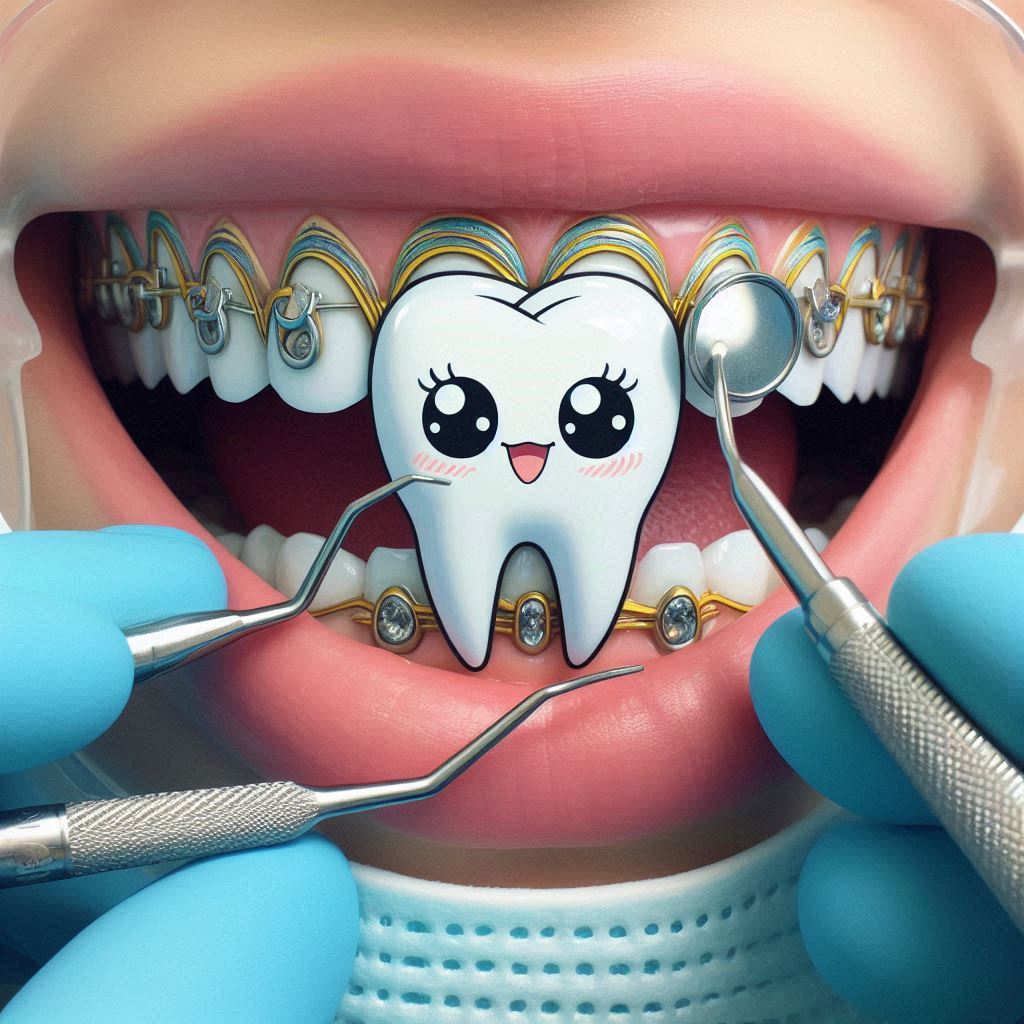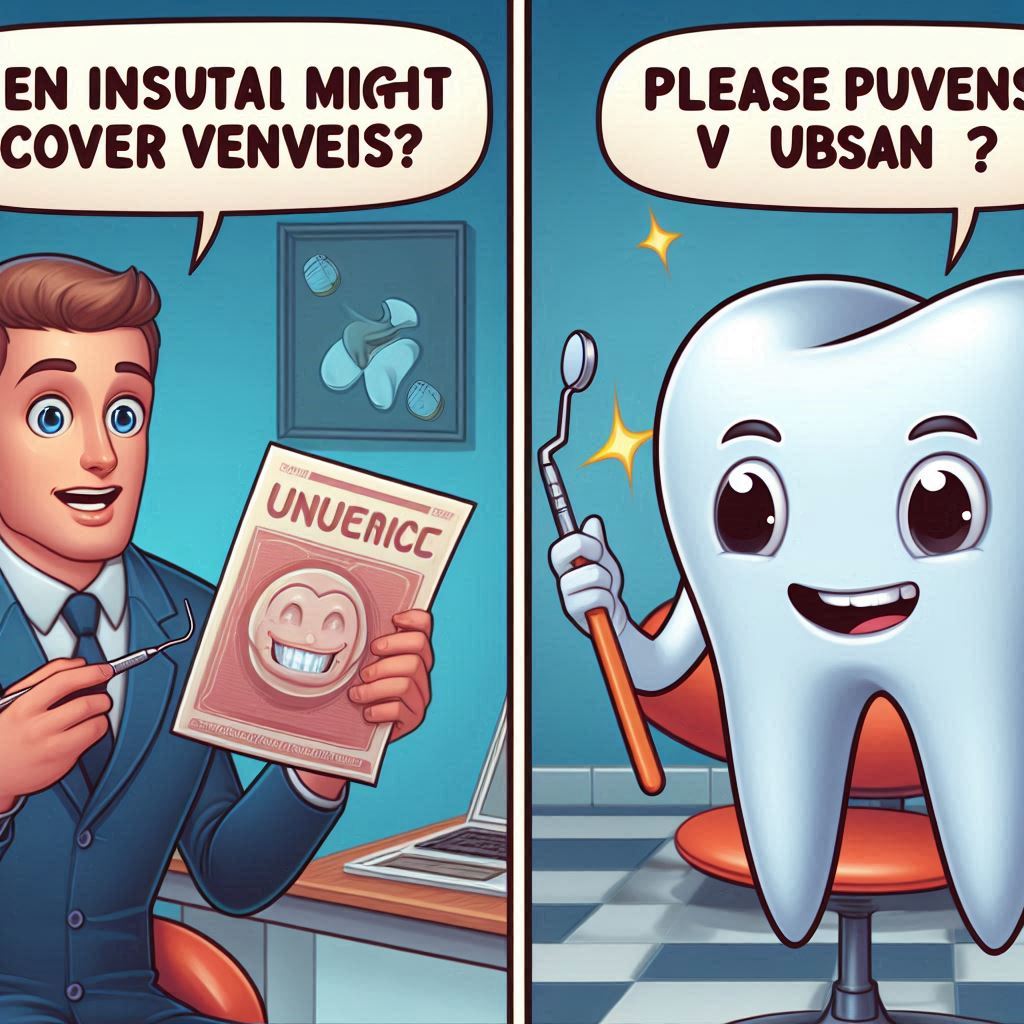Introduction:

Table of Contents
When Dental Insurance Might Cover Veneers


Dental veneers are thin shells custom-made to cover the front surface of teeth, enhancing their appearance and correcting imperfections. While often seen as cosmetic, there are instances where denhttps://featurefilm.online/insure-your-hummer-legacy/tal insurance might cover veneers, particularly when they serve a medical purpose beyond aesthetics.
Medical Necessity:
- Restorative Treatment: If veneers are required to repair teeth damaged by decay, fracture, or erosion, insurance coverage is more likely. This is because the veneers are not solely for cosmetic improvement but also for restoring the tooth’s function and health.
- Functional Improvement: Veneers can be used to correct bite problems or misalignment. If a dentist determines that veneers are necessary for improving the patient’s bite or chewing function, insurance may cover part or all of the cost.
- Replacing Damaged Veneers: In cases where existing veneers are damaged due to underlying dental issues, insurance might cover their replacement as it addresses an existing denthttps://www.thesuperbill.com/al problem rather than a purely cosmetic concern.
Factors Influencing Coverage:

- Specific Insurance Plan: Each dental insurance plan has unique coverage terms and conditions. It’s essential to review the plan’s policy on cosmetic procedures and restorative treatments to understand what is covered and under what circumstances.
- Dentist’s Diagnosis: The dentist’s diagnosis and treatment plan play a crucial role in determining coverage. A comprehensive assessment outlining the medical necessity of veneers is vital for insurance claims.
- Pre-authorization: Some insurance plans may require pre-authorization for veneer procedures. This involves submitting the treatment plan to the insurance company for approval before the procedure is performed.
Tips for Obtaining Coverage:
- Consult with Your Dentist: Discuss your concerns and treatment goals with your dentist. They can help determine if veneers are medically necessary and provide the necessary documentation for insurance claims.
- Check Your Insurance Policy: Thoroughly review your dental insurance policy to understand the coverage terms related to veneers and restorative procedures.
- Seek Pre-authorization: If required by your insurance plan, obtain pre-authorization before starting the veneer treatment to avoid unexpected out-of-pocket expenses.
- Consider Alternative Financing: If insurance coverage is not available, explore alternative financing options such as dental savings plans or payment plans offered by dental offices.
Remember, while dental insurance might not always cover veneers for purely cosmetic reasons, there are situations where coverage is possible, particularly when the treatment serves a medical purpose. By understanding your insurance policy, consulting with your dentist, and exploring available options, you can make informed decisions about dental veneers and their potential coverage.
When Dental Insurance Might Cover Veneers:
Veneers for Restoration and Protection:

Dental insurance is more likely to cover veneers when they are used to restore or protect teeth that have suffered damage, decay, or significant wear. This is because the primary goal of the treatment shifts from aesthetic improvement to restoring the tooth’s structural integrity and functionality.
Documentation is Key:
To obtain insurance coverage, your dentist must provide thorough documentation explaining the medical necessity of veneers in your specific case. This documentation may include:
- Dental X-rays: To reveal the extent of damage or decay that necessitates the use of veneers.
- Clinical photographs: To visually document the tooth’s condition before and after treatment.
- Detailed treatment plan: Outlining the proposed veneer procedure and explaining how it will address the dental issue.
- Diagnostic codes: Specific codes that indicate the medical reason for the veneer treatment.
Examples of Situations Where Insurance Might Cover Veneers:
- Chipped or cracked teeth: Veneers can repair these damages, restoring the tooth’s appearance and preventing further fractures.
- Severe tooth erosion: Acidic foods or drinks, acid reflux, or excessive brushing can erode tooth enamel. Veneers can protect the exposed dentin and restore the tooth’s shape.
- Congenital tooth defects: Some individuals are born with misshapen or underdeveloped teeth. Veneers can correct these defects and improve both function and aesthetics.
- After root canal therapy: Teeth that have undergone root canal therapy often become brittle and discolored. Veneers can strengthen and restore the tooth’s appearance.
Important Considerations:
- Pre-existing conditions: If the damage or decay occurred before you obtained dental insurance, coverage might be limited or excluded.
- Alternative treatments: Insurance companies might require exploring less expensive alternatives, such as crowns or fillings, before approving veneers.
- Cosmetic exclusions: Some insurance plans explicitly exclude coverage for cosmetic procedures, even if they have restorative benefits.
By understanding the nuances of medical necessity and working closely with your dentist, you can increase the chances of obtaining insurance coverage for veneers when they are essential for restoring your oral health and function.
Accidental Injury:
Accidental Injury Coverage:
- Dental insurance plans often have specific provisions for covering dental injuries resulting from accidents. These provisions recognize that accidents can cause unexpected and significant damage to teeth, necessitating restorative treatments like veneers.
- The extent of coverage can vary depending on the insurance plan. Some plans may cover a percentage of the cost of veneers, while others may have a maximum limit for accidental injury coverage.
Examples of Accidents Covered:
Insurance coverage for veneers due to accidental injury typically applies to situations where the tooth damage was not intentional or self-inflicted. Some common examples include:
- Fractured teeth from a fall: If a fall results in chipped, cracked, or broken teeth, veneers can be used to restore the tooth’s shape and function.
- Sports-related injuries: Contact sports, such as football or hockey, can lead to dental trauma. Veneers can repair damaged teeth and protect them from further harm.
- Car accidents: Dental injuries are common in car accidents. Veneers can be used to rebuild and strengthen teeth that have been shattered or dislodged.
- Workplace accidents: Certain occupations carry a higher risk of dental injuries. Veneers can help restore the smiles of individuals who have suffered accidental tooth damage at work.
Documentation Requirements:
To ensure insurance coverage for veneers after an accident, proper documentation is crucial. This may include:
- Accident report: A police report or other documentation detailing the accident and its circumstances.
- Dental records: X-rays and photographs showing the extent of tooth damage before and after treatment.
- Dentist’s statement: A detailed explanation from your dentist outlining the necessity of veneers for repairing the accidental injury.
Additional Considerations:

- Waiting periods: Some insurance plans have waiting periods for certain procedures, including veneers. This means you might need to wait a specified period after enrolling in the plan before coverage kicks in.
- Pre-authorization: Your insurance provider might require pre-authorization for veneer treatment in accidental injury cases. This involves submitting the treatment plan for approval before the procedure is performed.
By understanding the nuances of accidental injury coverage and following the proper procedures, you can maximize your chances of receiving insurance support for veneers needed to restore your smile after an unfortunate accident.
Functional Issues:
Functional Necessity of Veneers:
Dental insurance companies recognize that veneers can play a crucial role in correcting certain functional issues. If a dentist determines that veneers are necessary to improve a patient’s bite alignment, chewing ability, or speech clarity, insurance coverage becomes more likely.
Demonstrating Functional Necessity:
To obtain insurance coverage, the dentist needs to demonstrate the functional necessity of veneers. This involves:
- Thorough examination: A comprehensive examination of the patient’s oral health and function, including assessment of bite alignment, jaw movement, and speech patterns.
- Diagnostic records: X-rays, photographs, and study models to document the functional issues and how veneers can correct them.
- Detailed treatment plan: A clear outline of the proposed veneer treatment, specifying how it will address the functional problems and improve the patient’s oral health.
Examples of Functional Issues Covered by Insurance:
- Malocclusion (misaligned teeth): When teeth are misaligned, it can cause difficulty in chewing, speaking, and even breathing. Veneers can reshape and reposition teeth to correct these issues.
- Bite problems: An improper bite can lead to excessive wear and tear on teeth, jaw pain, and headaches. Veneers can adjust the bite to alleviate these problems.
- Temporomandibular joint disorder (TMJ): Veneers can help realign the jaw and reduce stress on the TMJ, relieving pain and improving jaw function.
- Speech impediments: In some cases, misaligned or misshapen teeth can contribute to speech impediments. Veneers can reshape teeth to improve pronunciation and speech clarity.
Important Considerations:
- Severity of the functional issue: The extent to which the functional issue impacts the patient’s oral health and quality of life is a crucial factor in determining coverage.
- Alternative treatments: Insurance companies might require exploring less expensive or invasive alternatives before approving veneers.
- Policy limitations: Some insurance plans may have specific exclusions or limitations on coverage for functional procedures.
By understanding the role of veneers in addressing functional issues and working closely with your dentist to demonstrate their necessity, you can increase the chances of obtaining insurance coverage for this valuable restorative treatment. Remember, dental insurance coverage for veneers goes beyond cosmetic concerns, recognizing their potential to improve oral health and overall well-being.
Factors Affecting Insurance Coverage:
Factors Affecting Insurance Coverage for Dental Veneers
The extent of insurance coverage for dental veneers can vary significantly depending on several key factors. Understanding these factors can help you navigate the process of obtaining coverage and make informed decisions about your dental care.
- Specific Terms and Conditions of Your Dental Insurance Policy:
- Each dental insurance policy has unique terms and conditions regarding coverage for cosmetic and restorative procedures. Carefully review your policy documents to understand the specific limitations and exclusions related to veneers.
- Pay attention to the definition of “medically necessary” within your policy. Some policies have strict criteria for what they consider medically necessary, which can impact coverage decisions.
- Check the percentage of coverage for restorative procedures. Some plans may cover a percentage of the cost, while others may have a fixed maximum allowance.
- The Extent of Damage or Functional Impairment:
- The severity of the dental issue plays a crucial role in determining coverage. If the damage or functional impairment is significant and affects your oral health, the likelihood of obtaining coverage increases.
- Provide comprehensive documentation from your dentist, including x-rays, photographs, and a detailed treatment plan, to clearly demonstrate the extent of the problem and the necessity of veneers for restoration or functional improvement.
- Pre-authorization from the Insurance Provider:
- Some insurance plans require pre-authorization for certain dental procedures, including veneers. This means that your dentist must submit a treatment plan to the insurance company for approval before the procedure can be performed.
- Pre-authorization helps ensure that the treatment is covered under your policy and avoids any unexpected financial burden. It also allows the insurance company to assess the medical necessity of the veneers based on the provided documentation.
Additional Tips for Obtaining Insurance Coverage:
- Consult with your dentist: Discuss your concerns and treatment goals with your dentist. They can help determine if veneers are the most appropriate solution and provide the necessary documentation for insurance claims.
- Contact your insurance provider: If you have any questions about coverage for veneers, contact your insurance provider directly to clarify any doubts and understand the specific requirements for obtaining coverage.
- Explore alternative financing options: If insurance coverage is limited or unavailable, consider alternative financing options like dental savings plans or payment plans offered by your dentist’s office.
By understanding the factors that influence insurance coverage for dental veneers and taking proactive steps to navigate the process, you can maximize your chances of receiving financial support for this restorative treatment. Remember, open communication with your dentist and insurance provider is key to ensuring a smooth and successful experience.
Tips for Maximizing Insurance Coverage:
Tips for Maximizing Insurance Coverage for Dental Veneers
While dental insurance coverage for veneers isn’t always guaranteed, you can take proactive steps to maximize your chances of receiving financial support for this restorative treatment. Here are some essential tips:
- Consult with Your Dentist to Determine Medical Necessity:
- Schedule a comprehensive consultation with your dentist to discuss your dental concerns and treatment goals.
- Your dentist will assess your oral health and determine if veneers are medically necessary to address specific issues such as decay, damage, functional problems, or accidental injury.
- If veneers are deemed medically necessary, your dentist can provide detailed documentation, including x-rays, photographs, and a treatment plan, to support your insurance claim.
- Get a Pre-treatment Estimate and Submit it to Your Insurance Provider for Review:
- Request a pre-treatment estimate from your dentist outlining the anticipated cost of the veneer procedure.
- Submit this estimate to your insurance provider for review before the treatment begins.
- This allows you to understand your potential out-of-pocket expenses and gives the insurance company an opportunity to assess the coverage eligibility of the treatment.
- Keep Detailed Records of All Dental Treatments and Communications:
- Maintain meticulous records of all your dental appointments, treatments, and communications with your dentist and insurance provider.
- Keep copies of x-rays, photographs, treatment plans, pre-treatment estimates, insurance correspondence, and any other relevant documents.
- These records serve as valuable evidence in case of any disputes or discrepancies regarding coverage for veneers.
Additional Tips:
- Understand your insurance policy: Familiarize yourself with the terms and conditions of your dental insurance policy, including coverage limits, exclusions, and pre-authorization requirements.
- Explore alternative financing options: If your insurance coverage is limited, consider exploring alternative financing options like dental savings plans or payment plans offered by your dentist’s office.
- Appeal denied claims: If your insurance claim is denied, don’t hesitate to appeal the decision. Provide additional documentation and justification for the medical necessity of the veneers.
By following these tips, you can proactively navigate the insurance process and increase the likelihood of receiving financial support for your dental veneer treatment. Remember, open communication with your dentist and insurance provider is crucial for maximizing your insurance benefits and ensuring a positive dental care experience.
Conclusion:
- Medical necessity:
- Restorative treatments to repair damaged or decayed teeth.
- Functional corrections for bite problems or speech impediments.
- Replacement of existing veneers due to underlying dental issues.
- Accidental injury:
- Coverage for veneers needed to repair teeth damaged in an accident.
Factors influencing coverage include:
- Your specific insurance policy: Carefully review the terms and conditions regarding cosmetic and restorative procedures.
- Extent of damage or functional impairment: Severe cases with documented impact on oral health are more likely to be covered.
- Pre-authorization: Some insurers require pre-approval before covering veneer treatment.
To maximize your chances of coverage, follow these tips:
- Consult your dentist: Discuss your concerns and get a professional assessment of the medical necessity of veneers.
- Get a pre-treatment estimate: Submit it to your insurance provider for review before starting treatment.
- Keep detailed records: Maintain records of all dental treatments and communications with your dentist and insurance provider.
By understanding these factors and taking proactive steps, you can navigate the insurance process effectively and potentially reduce your out-of-pocket expenses for dental veneers. Remember, open communication with your dentist and insurance provider is crucial for a smooth and successful experience.
FAQs
Q: Are dental veneers usually covered by insurance? A: No, dental veneers are typically considered cosmetic and not covered by standard dental insurance plans. However, exceptions exist when veneers are deemed medically necessary for restorative or functional purposes.
Q: In what situations might insurance cover veneers? A: Insurance might cover veneers when they are used for:
- Restoring damaged teeth due to decay, fracture, or erosion.
- Correcting functional issues like bite problems or misalignment.
- Replacing existing veneers that have been damaged due to underlying dental problems.
- Repairing teeth damaged in an accident (covered under dental injury provisions).
Q: What factors influence whether insurance will cover veneers? A: Coverage depends on various factors, including:
- Your specific insurance plan and its terms and conditions.
- The dentist’s diagnosis and documentation of the medical necessity of veneers.
- The severity of the dental issue and its impact on oral health and function.
- Whether pre-authorization is required by your insurance provider.
Q: What steps can I take to increase the chances of getting insurance coverage for veneers? A:
- Consult with your dentist to determine if veneers are medically necessary and get proper documentation.
- Review your insurance policy thoroughly to understand coverage limitations and exclusions.
- Obtain a pre-treatment estimate and submit it to your insurance provider for review.
- Keep detailed records of all dental treatments and communications with your dentist and insurance provider.
Q: Are there alternative financing options if insurance doesn’t cover veneers? A: Yes, if insurance coverage is not available, you can explore options like:
- Dental savings plans that offer discounts on dental procedures.
- Payment plans offered by dental offices.
- Negotiating with your dentist for a reduced fee.
Q: Should I contact my insurance provider before getting veneers? A: Yes, it’s advisable to contact your insurance provider to clarify any doubts about coverage and understand the specific requirements for filing a claim. This can help avoid unexpected out-of-pocket expenses.




